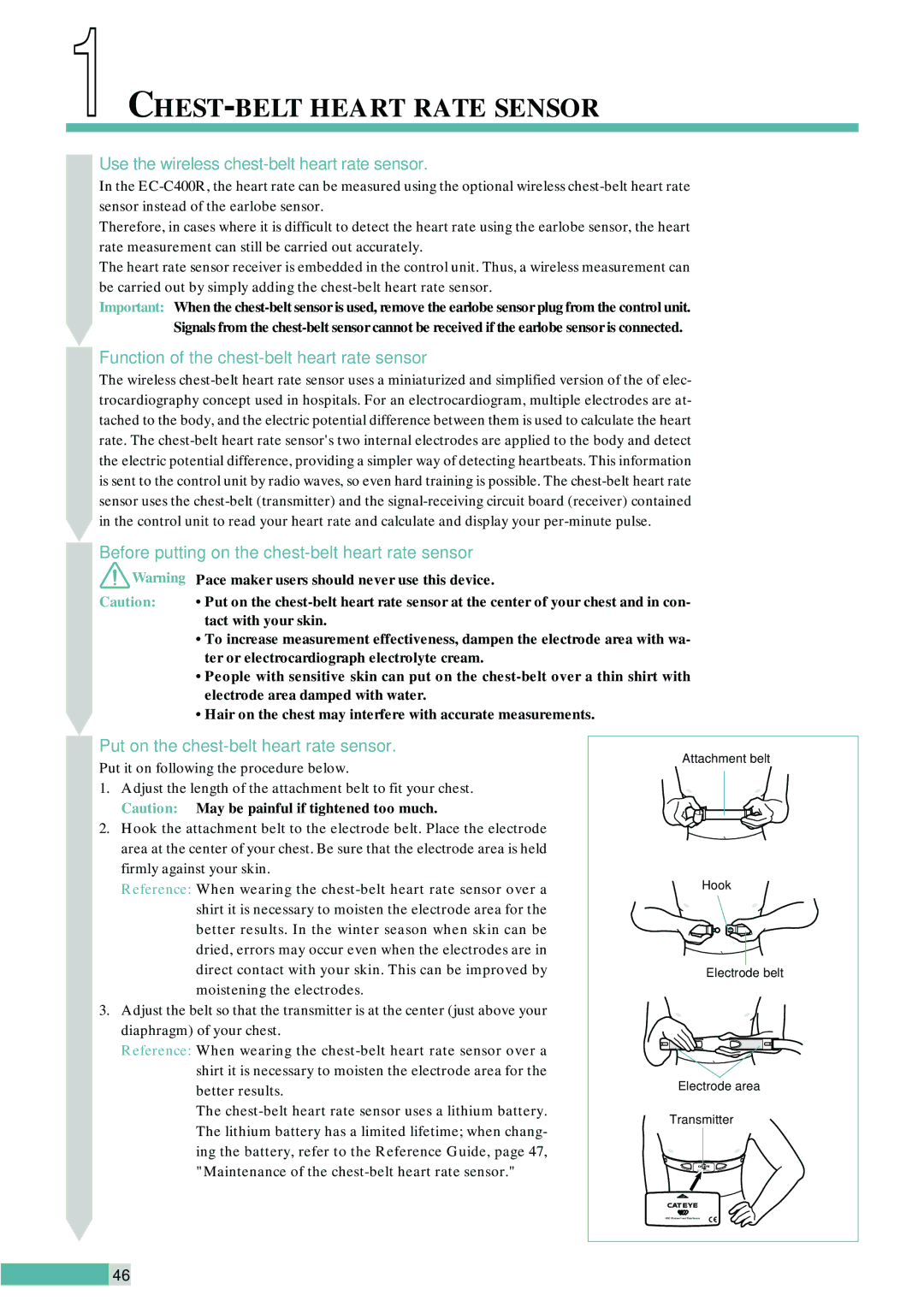
1 CHEST-BELT HEART RATE SENSOR
Use the wireless chest-belt heart rate sensor.
In the EC-C400R, the heart rate can be measured using the optional wireless chest-belt heart rate sensor instead of the earlobe sensor.
Therefore, in cases where it is difficult to detect the heart rate using the earlobe sensor, the heart rate measurement can still be carried out accurately.
The heart rate sensor receiver is embedded in the control unit. Thus, a wireless measurement can be carried out by simply adding the chest-belt heart rate sensor.
Important: When the chest-belt sensor is used, remove the earlobe sensor plug from the control unit. Signals from the chest-belt sensor cannot be received if the earlobe sensor is connected.
Function of the chest-belt heart rate sensor
The wireless chest-belt heart rate sensor uses a miniaturized and simplified version of the of elec- trocardiography concept used in hospitals. For an electrocardiogram, multiple electrodes are at- tached to the body, and the electric potential difference between them is used to calculate the heart rate. The chest-belt heart rate sensor's two internal electrodes are applied to the body and detect the electric potential difference, providing a simpler way of detecting heartbeats. This information is sent to the control unit by radio waves, so even hard training is possible. The chest-belt heart rate sensor uses the chest-belt (transmitter) and the signal-receiving circuit board (receiver) contained in the control unit to read your heart rate and calculate and display your per-minute pulse.
Before putting on the chest-belt heart rate sensor
 Warning Caution:
Warning Caution:
Pace maker users should never use this device.
•Put on the chest-belt heart rate sensor at the center of your chest and in con- tact with your skin.
•To increase measurement effectiveness, dampen the electrode area with wa- ter or electrocardiograph electrolyte cream.
•People with sensitive skin can put on the chest-belt over a thin shirt with electrode area damped with water.
•Hair on the chest may interfere with accurate measurements.
Put on the chest-belt heart rate sensor.
Put it on following the procedure below.
1.Adjust the length of the attachment belt to fit your chest.
Caution: May be painful if tightened too much.
2.Hook the attachment belt to the electrode belt. Place the electrode area at the center of your chest. Be sure that the electrode area is held firmly against your skin.
Reference: When wearing the chest-belt heart rate sensor over a shirt it is necessary to moisten the electrode area for the better results. In the winter season when skin can be dried, errors may occur even when the electrodes are in direct contact with your skin. This can be improved by moistening the electrodes.
3.Adjust the belt so that the transmitter is at the center (just above your diaphragm) of your chest.
Reference: When wearing the chest-belt heart rate sensor over a shirt it is necessary to moisten the electrode area for the better results.
The chest-belt heart rate sensor uses a lithium battery. The lithium battery has a limited lifetime; when chang- ing the battery, refer to the Reference Guide, page 47, "Maintenance of the chest-belt heart rate sensor."
Attachment belt
Hook
Electrode belt
Electrode area
Transmitter
TOP
MSC Wireless Heart Rate Sensor
 46
46

![]() Warning Caution:
Warning Caution:![]() 46
46